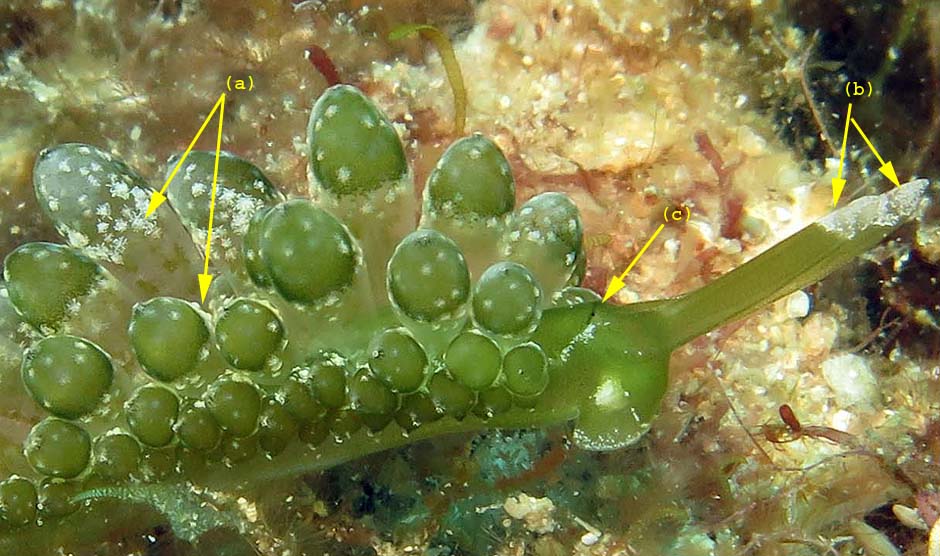This species has been observed on Madagascar Island
Species characteristics : This is a relatively large, olive-green species with spindle-shaped, slightly iridescent cerata. The distal portions of the cerata are darker green and their inner surfaces are weakly tuberculate with white flecks. The rhinophores are tipped with white and there is a dark olive-green line running across the head between the eye spots. |

|
|
| Showing species characteristics... | Photo Alain-Benoît Rassat |
|
Remarks :
Identification confirmed by Kathe Jensen
According Kathe Jensen " This is what I would call Stiliger smaragdinus. However, there are several problems: First of all, genus names within this family are not very well defined and in need of thorough revision. Second, molecular studies have indicated that there may be several species in a complex resembling S. smaragdinus and feeding on Caulerpa..."
Synonymous : (according Worms)
- No other name
Bibliographic data :
Various pigment spots can be seen on the surface of the body, ranging from white to yellow and dark green.
This species, Stiliger smaragdinus, has an amazing resemblance to the green alga Caulerpa racemosa on which it lives and feeds. It feeds by sucking the cell contents out of the large bubble-like cells of the Caulerpa..
References :
Bill Rudman Seaslug site : Sea Slug Forum : Stiliger smaragdinus
Medslug Stiliger smaragdinus
SeaSlug of Hawai'i Stiliger smaragdinus
Publications :
Baba, K. (1949) Opisthobranchia of Sagami Bay . Iwanami Shoten, Tokyo. 211pp + pls.
Other photos of Stiliger smaragdinus :
Alain-Benoît Rassat Madagascar, Plateaux des Arches 20 m, 12 November 2016, size : 20 mm |
The distal portions of the cerata are darker green and their inner surfaces are weakly tuberculate with white flecks (a). The rhinophores are tipped with white (b) and there is a dark olive-green line (c) running across the head between the eye spots. |
 |
|
More photos from Indian Ocean
If you have taken a photo of this species in Reunion, Mauritius, Mayotte or Madagascar Islands, please Contact us...